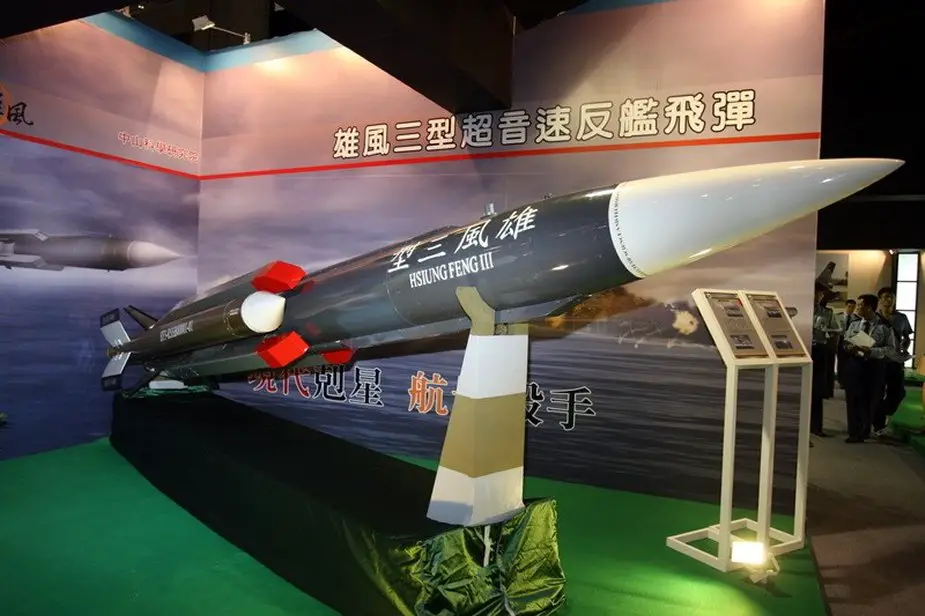Breaking news
Taiwan to deploy Hsiung Feng III missiles at Ching Chuan Kang Air Base.
According to information published by Taiwan News on August 30, 2021, the Republic of China Navy has deployed Hsiung Feng III missiles at a newly constructed base, Ching Chuan Kang Air Base, in Taichung, which houses multiple naval units.
Follow Navy Recognition on Google News at this link
 Hsiung Feng III anti-ship missile (Picture source: Deagel)
Hsiung Feng III anti-ship missile (Picture source: Deagel)
The Hsiung Feng III is the third in the Hsiung Feng series of anti-ship missiles developed by the Chungshan Institute of Science and Technology (CSIST) in Taiwan. The HF-3 missile uses a ramjet propulsion system, with two boosters for initial acceleration. Production of the ramjet-powered supersonic anti-ship missile began in 2007 and it is already deployed onboard ROC Navy Cheng Kung class and Kang Ding class Frigates.
The missile is cylindrical in shape and composed of three sections, namely guidance and control, warhead, and propulsion. The body has four inlet ducts and four clipped delta control surfaces.
It also features an armor-piercing warhead which generates tremendous destruction after hitting the target. The warhead is equipped with self-forging fragments and in the 225 kg (496 lb) weight class. It has a conventional warhead that is triggered by a smart fuze which directs most of the energy downwards, inside the target ship's hull.
The missile is believed to have an operating range of 400 km (250 mi; 220 nmi) with a possible maximum range of over 932 miles (1500 km) and a minimum range of 30 km. It can be deployed on ships and mobile trailers. The instructions for missile launch can be issued by a command and control system for different platforms and different paths leading to saturation of a ship's defense system.



























